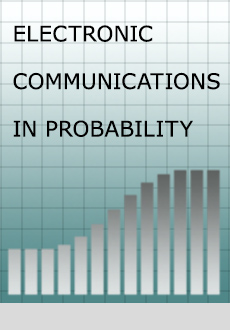Abstract
We obtain almost optimal convergence rate in the central limit theorem for (appropriately normalized) “nonconventional" sums of the form $S_N=\sum _{n=1}^N (F(\xi _n,\xi _{2n},...,\xi _{\ell n})-\bar F)$. Here $\{\xi _n: n\geq 0\}$ is a sufficiently fast mixing vector process with some stationarity conditions, $F$ is bounded Hölder continuous function and $\bar F$ is a certain centralizing constant. Extensions to more general functions $F$ will be discusses, as well. Our approach here is based on the so called Stein’s method, and the rates obtained in this paper significantly improve the rates in [7]. Our results hold true, for instance, when $\xi _n=(T^nf_i)_{i=1}^\wp $ where $T$ is a topologically mixing subshift of finite type, a hyperbolic diffeomorphism or an expanding transformation taken with a Gibbs invariant measure, as well as in the case when $\{\xi _n: n\geq 0\}$ forms a stationary and exponentially fast $\phi $-mixing sequence, which, for instance, holds true when $\xi _n=(f_i(\Upsilon _n))_{i=1}^\wp $ where $\Upsilon _n$ is a Markov chain satisfying the Doeblin condition considered as a stationary process with respect to its invariant measure.
Citation
Yeor Hafouta. "Stein’s method for nonconventional sums." Electron. Commun. Probab. 23 1 - 14, 2018. https://doi.org/10.1214/18-ECP142
Information





